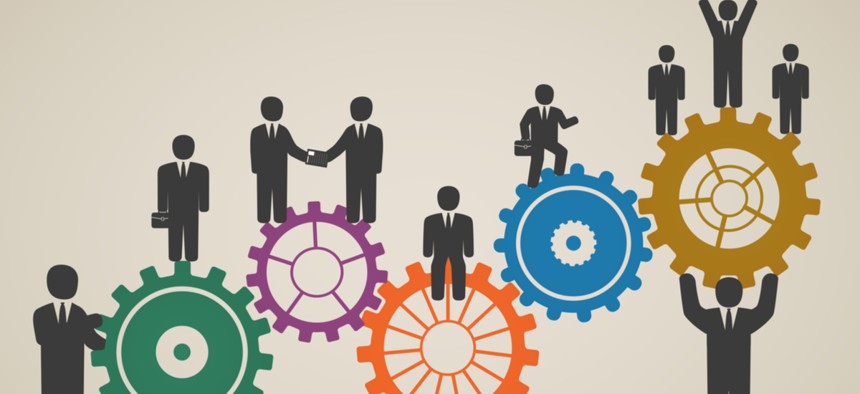Feds Must Start Preparing for Their Future Jobs, NSF CIO Says

Artram/Shutterstock.com
A new National Science Foundation app could help federal employees actively position themselves as part of the future workforce.
Federal employees could see their jobs radically changed by emerging technology in the coming years, and Dorothy Aronson worries agencies aren’t doing enough to prepare for this new reality.
As the National Science Foundation’s chief information officer, Aronson is responsible for helping the agency adopt the latest automation, artificial intelligence and analytics tools. As those technologies take over more internal operations, employees could find themselves displaced or expected to work more closely with tech than they do today, according to Aronson.
“People impacted by IT is a much broader group than the IT workforce,” she said in a conversation with Nextgov. “Maybe now we see ourselves as IT people or business people, security or HR, [but] a lot of that might get merged or changed in the future.”
The transformation is already underway, but in Aronson’s eyes, the government is largely ignoring the writing on the wall. While new tech could automate some federal jobs out of existence, it will also create a slew of new positions, and it’s high time agencies start thinking about how to fill them, she said.
“It’s our fear of that change that’s really holding us back … but our workforce does have to continue to move forward,” she said. And some of the onus falls on employees themselves.
On Nov. 9., NSF kicked off a competition to build a tool that provides future career advice based on people’s current skills and interests. The app would likely use artificial intelligence to both predict how the job market will change in the years ahead and match individuals to those future jobs, even if they don’t exist yet. Once someone is matched to a job, the app would also lay out the education and training they’d need to get there.
The apps developed through the competition will specifically focus on how NSF employees can map their futures, but Aronson said other agencies could ultimately adapt the tools to meet their own needs. While the app itself won’t remedy every workforce challenge the government faces, Aronson’s ultimate goal is to spark a conversation about how employees should prepare for their future.
And like it or not, she said, that preparation probably won’t have an end date.
As new technologies continuously enter the workplace, employees, especially in younger generations, will need to constantly adapt their careers and learn new skills to stay relevant on the job market, she said. The government must offer programs to reskill the workforce for the digital economy, but Aronson said it’s ultimately up to individuals to stay abreast of those changes.
And that’s where she sees the NSF app coming in handy: Because the tool continuously updates its job market predictions, it would provide real-time directions for how people should position themselves for the future.
Beyond providing individual career advice, Aronson said the tool could potentially inform agencies’ long-term workforce planning. Depending on the winning idea, the tool could give organizations granular data on each employee’s skills and talents, which could help them decide where to hire and how to invest in workforce development.
But according to Aronson, the goal at the moment is to get feds thinking about what they want to do next.
“My focus is on empowering the individual to create a better future for themselves, a happy, continuously evolving career,” she said.



